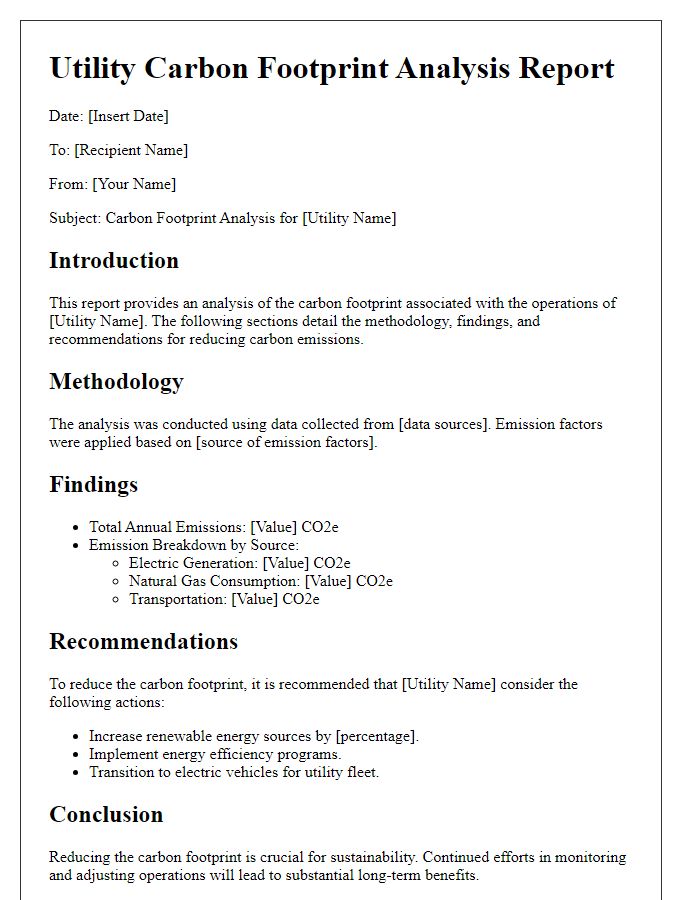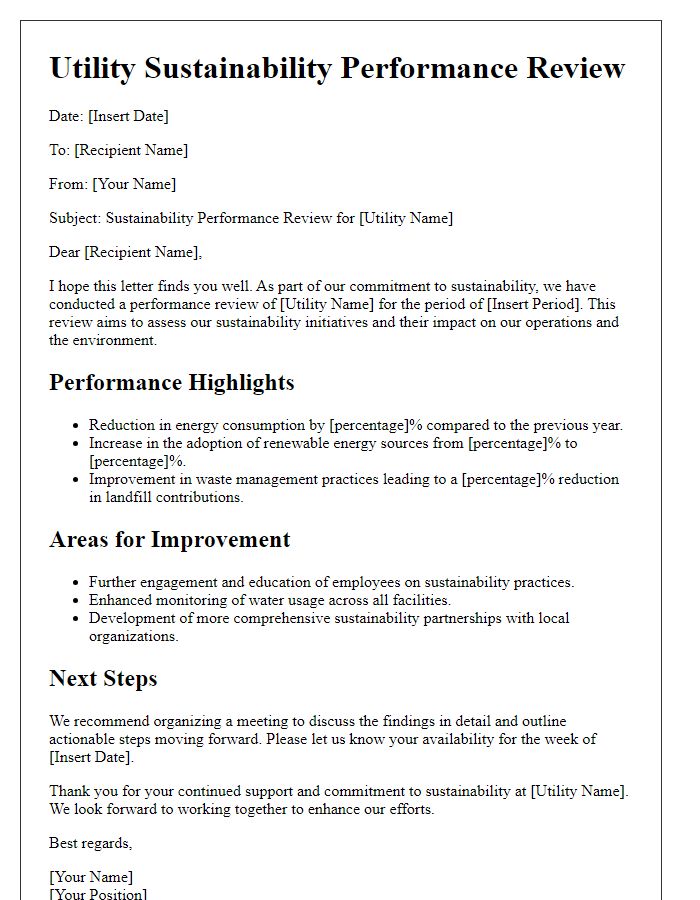Are you curious about the impact of your utility consumption on the environment? Understanding your carbon footprint is crucial for making informed decisions that contribute to a healthier planet. In our utility carbon footprint report, we break down the data in a clear and engaging manner, allowing you to see how your energy use stacks up. Join us as we explore effective strategies for reducing your carbon footprint and creating a more sustainable futureâread on to discover more!

Purpose Statement
Utility carbon footprint reports measure greenhouse gas emissions caused by energy use, focusing on electricity, natural gas, and water consumption. These assessments aim to provide insights into total CO2 emissions, helping stakeholders like residential sectors, businesses, and policymakers evaluate their environmental impact. Energy consumption data, sourced from utility records and usage patterns, serves as a foundation for calculating carbon outputs, generally expressed in metric tons of CO2. By identifying areas for improvement and potential energy-saving strategies, organizations can set actionable targets for emissions reduction. The report enhances transparency, supports sustainability goals, and fosters community engagement in efforts to combat climate change effectively.
Emissions Data Summary
Utility companies play a crucial role in the global efforts to reduce greenhouse gas emissions. The emissions data summary illustrates the carbon footprint associated with electricity generation and distribution. Key contributions to emissions include fossil fuel sources such as coal (releasing approximately 2.2 pounds of CO2 per kilowatt-hour) and natural gas (around 0.9 pounds of CO2 per kilowatt-hour). Renewable energy sources, such as solar and wind, have significantly lower emissions, often reaching near-zero. This report highlights emissions trends over the past year, revealing a shift towards cleaner energy sources across multiple states, including California, which aims for 100% clean energy by 2045. Additionally, the summary includes an analysis of energy consumption patterns across residential, commercial, and industrial sectors, showcasing opportunities for reducing carbon emissions through energy efficiency programs and alternative energy investments.
Methodology and Metrics
The methodology for calculating the utility carbon footprint involves a systematic approach utilizing emission factors and energy consumption data. The analysis primarily focuses on electricity, gas, and water usage across various facilities, including industrial plants and office buildings. Metrics utilized include greenhouse gas (GHG) emissions per kilowatt-hour (kWh) for electricity sources, typically ranging from 0.4 to 0.9 kg CO2e/kWh depending on the power generation mix of the region, as well as natural gas emissions quantified at approximately 0.185 kg CO2e per cubic meter. Water consumption is factored into the report by calculating the energy-intensive processes involved in water heating and distribution, alongside awareness of local water treatment practices. This comprehensive evaluation also considers ancillary factors such as embedded energy in goods and services, establishing a robust assessment of total carbon impact for utilities served in urban and suburban environments across the United States.
Reduction Strategies
Utility companies are increasingly committed to reducing their carbon footprint through various innovative strategies aimed at achieving sustainability. Renewable energy sources, such as solar power (which contributed to 10% of the U.S. energy mix in 2022) and wind energy (accounting for 8% in the same year), play a crucial role in minimizing greenhouse gas emissions. Implementing energy efficiency programs can significantly lower power consumption; for instance, LED lighting retrofitting can reduce energy use by up to 75%. Smart grid technology enables real-time monitoring of electricity usage, enhancing load management to further decrease carbon emissions. Additionally, utilities may invest in carbon offset programs, which can include reforestation efforts and renewable energy credits, making strides in achieving climate goals set forth in international agreements like the Paris Accord. These reduction strategies collectively support the transition towards a resilient low-carbon economy.
Contact Information
A utility carbon footprint report provides essential insights into the greenhouse gas emissions associated with energy consumption in residential or commercial settings. Key data includes the total energy usage (measured in kilowatt-hours) for the reporting period, typically spanning one year, allowing comparisons against previous years. This report should specifically break down emissions from different sources, such as electricity generated from fossil fuels like coal, natural gas, and renewables like solar or wind power. Location-specific factors, such as the local energy mix and regional climate, can also influence carbon footprint calculations. Furthermore, including visualization tools, such as charts and graphs, can effectively convey trends and highlight areas for potential improvements in energy efficiency and sustainability efforts.












Comments